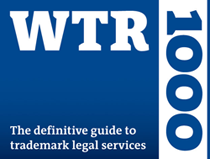Intellectual Property Insights from Fishman Stewart
Mini Article – Volume 23, Issue 24
Share on Social

The Poinsettia: the Christmas Flower with a History Grafted to Intellectual Property
The poinsettia, well known for its red and green foliage, is an ubiquitous symbol of the Christmas holiday season.
It has become one of the most popular plants in the world, with annual sales of around 90 million units and a global retail impact of nearly $US 1 billion.
Indigenous to Mexico and Central America, the poinsettia was used by the 14th century Nahua people for dye and medicinal purposes and was revered by Aztec royalty. After Spain colonized Mexico, Franciscan monks began to showcase the plant in annual Christmas processions, but the plant remained essentially unknown to the rest of the world.
That all changed in 1828, when Joel Roberts Poinsett, responsible for the Poinsettia’s English name, came across the plant on a trip to the Southern town of Taxco. Poinsett was not only a diplomat, having been the first United States minister to Mexico who failed to purchase Texas from the Mexicans, but he was also a physician and a botanist who co-founded the National Institute for the Promotion of Science and the Useful Arts, a predecessor of the Smithsonian Institute.
Struck by the beauty of the Poinsettia, Poinsett shipped specimens back to the United States, where it made its American debut at a flower show in Philadelphia. News reports at the time described the poinsettia as “the showiest flower yet to be seen” and it was praised for having “the most brilliant scarlet ever produced in the vegetable or mineral kingdom.”
Despite the positive press initially received, the reality is that poinsettias available in the 1800s and early 1900s were ill-suited for mass production and distribution. The plant would only last 2 to 3 days under the best of circumstances. In fact, the native name of the poinsettia is cuetlaxochitl (kwet-la-SHO-sheet), meaning “flower that withers.”
In the 1920s Paul Ecke took over a family nursery that had transitioned from selling a variety of cut flowers to only selling poinsettias. He began to develop secret breeding techniques that vastly improved the durability and aesthetics of poinsettias while simultaneously taking advantage of the United States Plant Patent Act of 1930. The Paul Ecke Ranch received over 150 patents for different varieties of poinsettias. Representative patents from the 1960s include Plant Pat. 2,924 and Plant Pat. 2,925. A more recent example includes US PP24,158, directed to a poinsettia plant named “PERHC59B,” which was issued in 2014.
By the early 1990s the Paul Ecke Ranch was selling over 500,000 potted plants and more than 25 million cuttings each year. At its peak, relying on a combination of trade secrets and patents, Paul Ecke Ranch controlled 90 percent of the United States poinsettia market.
While a patent grants a period of limited exclusivity in return for a public disclosure of the invention embodied in the patent, trade secrets are only valuable while confidentiality is maintained. If someone reverse engineers a trade secret, all value is lost. That is what happened to the Paul Ecke Ranch in 1992. A graduate student named John Dole, now a professor at North Carolina State University and a Google Scholar, managed to reverse-engineer the ranch’s top-secret growing techniques, which involved grafting together two poinsettia plants. His published findings completely upended the poinsettia industry.
Despite the patent protection still enjoyed by the Paul Ecke Ranch at the time, competition flooded in as dozens of new color variations popped up using the now-public growing techniques including hues of white, yellow, neon, and pink, with names like Premium Picasso and Monet Twilight.
Growers were forced to aggressively cut overhead expenses that ushered in an era of consolidation. After slowly watching its monopoly decline, Paul Ecke Ranch was sold to a Dutch conglomerate in 2012.
The unexpectedly rich history of the seemingly simple poinsettia underlines the power of creativity as well as the advantages and risks associated with different forms of intellectual property protection.
We wish each and every one of you a safe and prosperous 2024!
Michael Stewart is a founding member of Fishman Stewart. He has worked in a wide range of technical areas including information technology, e-commerce, telecommunications, and mechanical, aerospace, computer, and nuclear engineering. His practice includes domestic and foreign patent prosecution, e-commerce and information technology, patent opinions, intellectual property litigation, domestic and foreign trademark prosecution, trademark opinions, copyrights, trade secrets, rights of publicity, intellectual property evaluations/due diligence and drafting and negotiating technology and intellectual property agreements. Check out his full bio here.


Published December 28th, 2023
Related Content from Fishman Stewart
In a recent decision, the U.S. Court of Appeal for the Eighth Circuit affirmed a jury verdict holding that the use of the "Success Kid" meme by a congressman's reelection campaign for fundraising purposes did not qualify as fair use.
In February 2024, proposed legislation was introduced in US House of Representatives which would extend copyright protection to golf courses. The bill is titled “Bolstering Intellectual Rights against Digital Infringement Enhancement Act” or the “BIRDIE Act”.
June is Pride Month, which honors the 1969 Stonewall Uprising in Manhattan and recognizes the impact that lesbian, gay, bisexual, and transgender (LGBTQ+) individuals have had on history locally, nationally, and internationally. The United States Patent and Trademark Office flies the Pride Flag and promotes the Pride community’s contributions with programming offered annually.
June is Pride Month. This year we are celebrating with some IP tips for drag performers! Drag performers can protect their intellectual property by registering the copyrights in their original works of music, choreography, and comedy sketches.
You’re rarely more than a few yards from Finny’s favorite chips, semiconductor chips to be precise. But what exactly is a semiconductor chip?
"May the 4th Be With You," also known as Star Wars Day, takes place annually on May 4th. The phrase is a pun on the iconic Star Wars catchphrase "May the Force be with you."
First, a big “thank you” to all our readers who have given feedback on our newsletter. We appreciate your interest and insights. It is always a treat to hear from you! Second, we wanted to provide you with updates on some of our most popular articles
“Palworld”— a computer game created and published by Japanese developer Pocket Pair. Released as an early access game in January 2024, it sold over seven million copies on the computer platform Steam in the first five days and had nearly 20 million players in the first two weeks.
This year’s Super Bowl featured a thrilling overtime victory for the Kansas City Chiefs over the San Francisco 49ers. With estimates as high as 123 million viewers, America's premier sporting event also serves as a grand stage for creativity and intellectual property protections that enhance the game’s success.
Valentine’s Day is just around the corner and jewelry sales are usually around $6 billion USD in the United States alone. In 2021, the US Customs and Border Protection agency seized over $1 billion USD worth of counterfeit pieces of jewelry.
IDENTIFYING, SECURING AND ADVANCING CREATIVITY®











